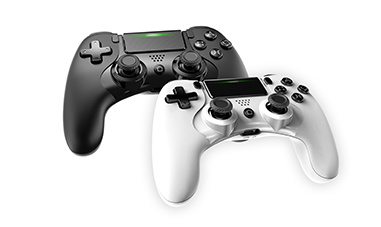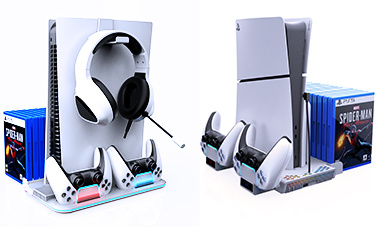language

Are disenfectant wipes ok to use on game controllers?
Time of issue:2025-04-30
let’s talk about something important: keeping our controllers clean! We use them all the time, our hands get sweaty, and sometimes, well, they get a little… gross. Disinfectant wipes seem like the perfect solution, right? Quick, easy, and they kill germs. But are they actually safe for our precious gaming gear? That’s what we’re diving into today. We’ll explore what makes disinfectant wipes tick, what controllers are made of, and how these two things interact. It’s time to get the lowdown on keeping your controllers clean and germ-free without accidentally turning them into expensive paperweights.
The Power of Disinfectant Wipes
Let’s break down what’s inside those handy wipes. Most disinfectant wipes use a combination of chemicals to kill germs, bacteria, and viruses. These chemicals are often things like alcohol (isopropyl or ethanol), quaternary ammonium compounds (often shortened to quats), or sometimes even bleach in diluted form. These ingredients are very good at their jobs, which is killing those unwanted little critters that can make us sick. But, they are powerful, and that’s where the concern comes in when using them on our delicate electronics.
Common Active Ingredients and Their Effects
Alcohol (Isopropyl or Ethanol): These are great for killing germs, but they can also dry out plastics and rubber over time. Imagine leaving a wet paper towel on a plastic toy for days, it’ll become dry and brittle. The same thing can happen with repeated use of alcohol wipes on controllers. It can cause fading of color and may make some plastics feel sticky and unpleasant.
Quaternary Ammonium Compounds (Quats): These work differently than alcohol, but they can also cause problems. They are less likely to dry out plastic directly, but they can leave behind a residue. This residue can attract dirt and dust more easily, and in some cases, it might even cause a sticky or gummy feeling over time.
Bleach (Sodium Hypochlorite): Bleach is a strong disinfectant, but it is too harsh for most electronics. Even diluted bleach can damage the surfaces of controllers. This is a big no-no for any gaming equipment. It is highly corrosive and can cause discoloration, degradation, and even damage the internal circuitry if it manages to seep inside the controller.
The key takeaway here is that while these ingredients are effective at killing germs, they also have the potential to harm the materials that make up your game controllers.
Read also Whats A Game Card? A Simple Explanation
Anatomy of a Game Controller: What Are They Made Of?
Now, let’s look at what your game controllers are actually made of. Most controllers use a mix of different materials, each with its own properties and reactions to chemicals.
Common Controller Materials
Plastic: Most of the exterior casing of a game controller is made of plastic. This plastic can be different types, like ABS plastic (Acrylonitrile Butadiene Styrene) or polycarbonate. These types of plastics are very durable but can be sensitive to harsh chemicals like those found in some wipes.
Rubber or Silicone: Many controllers have rubber or silicone components, especially for grips, thumbsticks, and buttons. These materials can become sticky or degrade from certain chemicals. Think of how some rubber bands get sticky and fall apart when exposed to the sun or certain liquids.
Metal: Some controllers may have metal parts, often used in the buttons, D-pads, triggers, or internal components. Although metal is generally less reactive than plastics, it may corrode from exposure to bleach-based cleaning solutions.
Electronics: The inside of a controller has sensitive electronic parts including circuit boards, chips, and sensors. These are especially vulnerable to damage from any liquids, including those in disinfectant wipes. It’s important to remember that even if a controller looks dry on the outside, liquids may have seeped inside and damaged these vital internal components.
Understanding these materials will help us see why some cleaning methods are better than others.
The Potential Problems with Disinfectant Wipes on Controllers
Now that we know what’s in the wipes and what our controllers are made of, let’s talk about why using disinfectant wipes might not be the best idea.
Damage to Plastics
Discoloration: Harsh chemicals, especially alcohol, can cause the plastic of your controller to fade or become discolored over time. Imagine your cool black controller turning slightly grey or yellow.
Brittleness: Repeated use of alcohol-based wipes can make the plastic brittle and prone to cracking or breaking. You definitely don’t want your controller to break in the heat of a battle!
Surface Degradation: Some wipes can leave a residue that makes the surface of your controller feel sticky, slippery, or unpleasant.
Damage to Rubber and Silicone
Stickiness: Rubber and silicone components, like thumbsticks, grips, and buttons, can become sticky and attract dirt.
Degradation: Over time, some chemicals can cause the rubber or silicone to break down and become cracked or crumbly. This makes your controller less comfortable and less enjoyable to use.
Damage to Electronics
Corrosion: Liquids from disinfectant wipes, if they seep into the controller, can cause corrosion on the internal metal parts and electronic circuits.
Short Circuits: The presence of liquid, especially a conductive one like those found in many wipes, can cause short circuits which can completely destroy the controller.
Button Issues: Liquids can also get under the buttons, which can cause them to become less responsive or completely stuck.
These are some pretty significant risks, so it’s best to be careful and thoughtful about how we clean our controllers.
Read also What Are Good Names For Traveller In Roleplay Games
Safe Cleaning Alternatives
Okay, so maybe disinfectant wipes aren’t the best option. But how do we keep our controllers clean and germ-free without damaging them? Here are some safer alternatives:
The Gentle Touch: Dry Cloths and Microfibers
Microfiber Cloths: The best first step is a gentle wipe down with a clean, dry microfiber cloth. This will remove dust, fingerprints, and some surface grime.
Soft Cloths: Use lint-free soft cloths for the job. Avoid abrasive materials that might scratch your controller.
These will work for most of the daily cleaning that needs to be done on the controllers.
Slightly Damp Cloths
If your controller needs a little more than just a dry wipe down, you can use a slightly damp cloth.
Distilled Water: Dampen a cloth (a microfiber cloth works best) with distilled water. Distilled water is better because it has fewer minerals that can leave streaks or deposits behind.
Wring out the cloth well: It’s extremely important that the cloth is just barely damp. You don’t want any water dripping into the controller.
Gentle wiping: Gently wipe down the controller, being careful not to press too hard.
Dry thoroughly: After wiping, immediately dry the controller with another clean, dry cloth.
If you absolutely need to use alcohol for a deeper clean, use it with extreme caution.
Here’s how to do it safely:
Use 70% or 90% isopropyl alcohol: This is usually the least harmful option. Do not use rubbing alcohol or other household cleaners which may contain perfumes, dyes, or other additives that could damage the controller.
Apply to a Cloth, Not the Controller: Never spray or pour alcohol directly onto the controller. Instead, lightly dampen a clean microfiber cloth with a very small amount of alcohol.
Test in an Inconspicuous Area: Before cleaning the entire controller, test a small, hidden area like the underside to make sure the alcohol doesn’t cause any adverse reactions.
Wipe Gently: Use the damp cloth to gently wipe down the surface of the controller. Avoid pressing too hard.
Dry Thoroughly: Immediately dry any wet areas with a clean, dry microfiber cloth.
Avoid Crevices: Be very careful to avoid getting any alcohol into the seams or crevices of the controller.
Remember, even when using alcohol carefully, it is better to minimize how often you use it. Frequent exposure to alcohol, even with careful application, can still cause damage over time.
Specialized Electronic Cleaners
There are some specialized cleaning products designed for use on electronics. If you are not comfortable with even carefully applying alcohol, these might be a good option. Be sure to:
Choose a Reputable Brand: Look for a product that is specifically designed for cleaning electronics.
Read the Instructions Carefully: Follow the manufacturer’s instructions closely.
Test in an Inconspicuous Area: Always test the product in a small area before using it on the entire controller.
Sometimes, the best approach is to avoid cleaning altogether. Here are a few situations:
If the Controller is Significantly Damaged: If your controller has cracks, missing parts, or seems to have other damage, cleaning can actually cause more problems. Liquid can seep into the cracks and cause further issues.
If you are unsure: If you are not sure what kind of cleaner is safe to use or are not comfortable trying any of these methods, it is best to avoid any cleaning.
Before storage: When storing your controllers for long periods, make sure they are completely dry and free from any residue. This prevents the development of mold or corrosion while they are not in use.
Best Practices for Controller Care
Here are some additional tips to keep your controllers in great shape:
Wash your hands: Before you start gaming, make sure your hands are clean. This prevents dirt, oils, and sweat from getting on your controller in the first place.
Don’t Eat and Game: Avoid eating or drinking while gaming. This will prevent crumbs, spills, and sticky fingers from messing up your controllers.
Regular Cleaning: Don’t wait until your controller is covered in grime to clean it. Clean it often and lightly for best results.
Store Controllers Safely: When not in use, store your controllers in a safe place, away from direct sunlight, high humidity, or extreme temperatures.
A Summary of Cleaning Methods
To make things clearer, here’s a table summarizing what we’ve discussed:
Dry Microfiber Cloth Safe, easy, removes dust and fingerprints Doesn’t clean heavily soiled controllers Daily cleaning and maintenance
Slightly Damp Cloth (Distilled Water) Safe, effective for light grime Needs to be very carefully done to prevent water damage, not effective on heavy grime Weekly cleaning or as needed
Isopropyl Alcohol (70% or 90%, Applied Carefully) Effective for disinfecting, removes stubborn grime Potential to damage plastics and rubber if used too often or incorrectly, risk of electronic damage Infrequent deep cleaning, use only when absolutely needed
Safe and effective when used correctly Can be more expensive, requires careful reading of instructions Alternatives to alcohol cleaning
Disinfectant Wipes Quick and easy Likely to damage your controllers over time Generally not recommended
So, are disinfectant wipes ok to use on game controllers? The answer is not really, they come with more risks than benefits. While they might seem convenient, the potential damage to your controller is not worth it. It’s best to stick to the gentler, safer methods we’ve discussed. A little bit of careful cleaning goes a long way in keeping your game controllers in top-notch condition and ready for countless gaming hours ahead.
Final Thoughts
So, are disinfectant wipes ok to use on game controllers? Generally, yes, but with caution. Avoid overly saturated wipes; they could damage the internal components.
Always wring out excess moisture before wiping. Check the manufacturer’s cleaning guidelines whenever possible to be safe.
A lightly dampened wipe is usually sufficient for surface cleaning. Using common sense will help keep your gaming gear in great condition.
Previous
More Information
How to connect controller to epic games
2025-04-29
How to Fix PS5 Controller Stick Step by Step
2025-04-26










